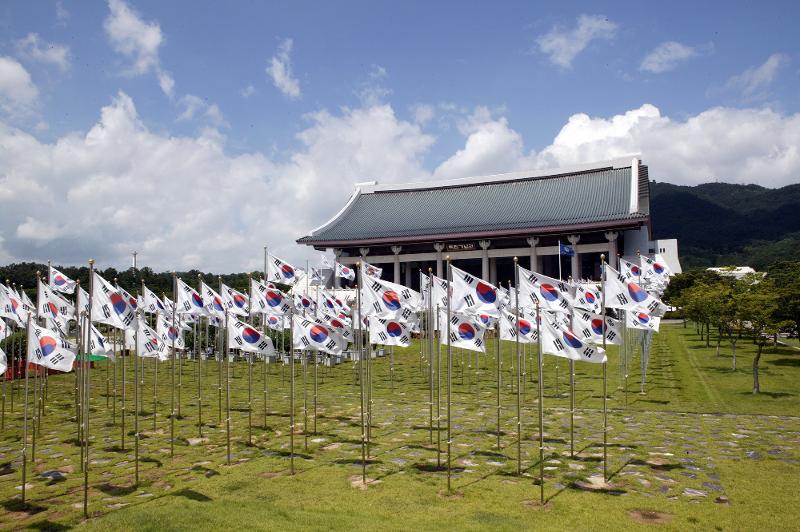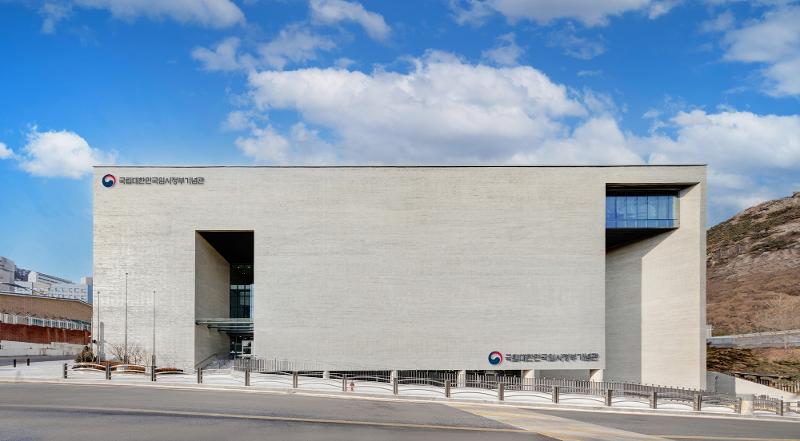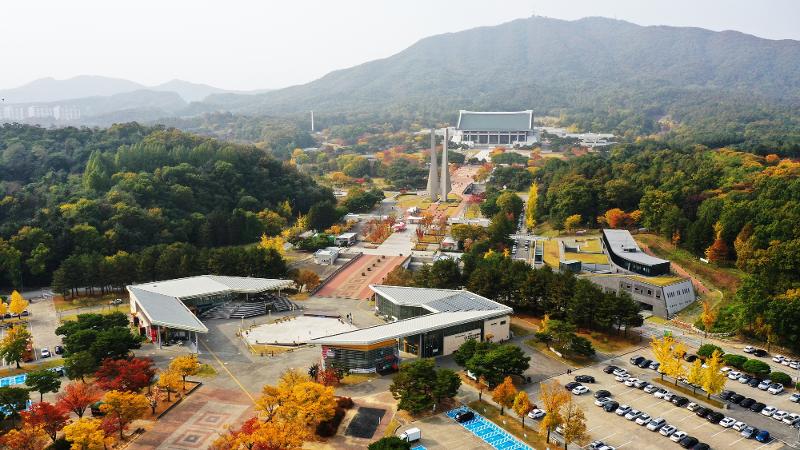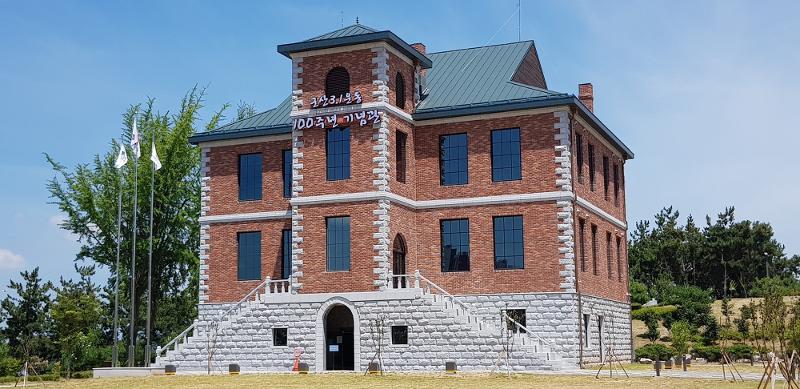
The Independence Hall of Korea is located in Cheonan, Chungcheongnam-do Province. (Independence Hall of Korea)
By Yoo Yeon Gyeong
Photos = Ministry of Patriots and Veterans Affairs
Aug. 15 is Liberation Day, or Gwangbokjeol in Korean, a term that literally means “Recovery of Light Day.”
Korea on that fateful day in 1945 regained sovereignty from imperial Japan after 35 years of colonial rule to “regain light” as an independent nation.
Liberation Day is one of the country’s five national holidays of Korea along with March First Independence Movement Day (March 1), Constitution Day (July 17), National Foundation Day (Oct. 3) and Hangeul Day (Oct. 9).
Liberation Day was designated a holiday because independence was achieved autonomously without reliance on foreign powers, stressing the country’s history of tenacious struggle for self-determination.
Based on recommendations from the Ministry of Patriots and Veterans Affairs, Korea.net presents the following four landmarks to visit to commemorate the 79th Liberation Day.
Each venue is like going back in time to remember the noble dedications of independence activists and the history of national independence.
National Memorial of Korean Provisional Government
The National Memorial of the Korean Provisional Government is located in Seoul’s Seodaemun-gu District.
This memorial preserves the history of Korean Provisional Government (KPG), which was launched in 1919, displaying the government’s request for liberation submitted to the Paris Peace Conference, written songs of the Korean Liberation Army and the latter’s uniforms.
The commemorative program “Culture Independence Manse (Hurrah)” and the exhibition “Memoir about the Korean Provisional Government: Old Days like a Dream, Heart-Wrenching Stories” will both run through Sept. 1.
Also offered are interactive zones and busking performances under the theme “The Korean Provisional Government Spreads the Cultural Independence Movement,” as well as a class on making the food of KPG officials.
Independence Hall of Korea
The Independence Hall of Korea is in Cheonan, Chungcheongnam-do Province. (Independence Hall of Korea)
This venue promotes the value of the independence movement through the collection, analysis and management of relevant data, academic research, exhibitions and education to honor those who sacrificed themselves for the country.
Behind the Grand Hall of the Nation, a symbolic building at Independence Hall, are six permanent exhibition halls, one for special exhibitions, interactive program center and video room using mixed reality to publicize the movement.
Visitors can learn about the Korean people’s history of surmounting crises by overcoming foreign invasions and maintaining autonomy and independence and the story of national development.
Commemorative and interactive events to mark Liberation Day include an air show by the Republic of Korea Air Force’s aerobatic team Black Eagles, solving quizzes at Remembrance Office and riding a C-47 transport airplane.
Memorial Hall for the 100th anniversary of March First Independence Movement in Gunsan
The Gunsan Modern History Museum is based in Gunsan, Jeollabuk-do Province. (Gunsan Modern History Museum)
Gunsan, Jeollabuk-do Province, is where the March First Independence Movement started south of the Hangang River in Seoul. Yeongmyeong School, Jesus Hospital and Guam Church played key roles in the campaign and lit the fuse to ignite the spread of freedom fever nationwide.
The Memorial Hall for the 100th anniversary of March First Independence Movement in Gunsan seeks to promote the city’s historical role in the movement and pass on the lofty spirit of independence activists who gave their lives for the nation.
The museum’s exterior is a replica of Yeongmyeong School from 100 years ago, and relics related to pro-independence activities that took place in the city are displayed.
Gyeongsangbuk-do Independence Movement Memorial
The Gyeongsangbuk-do Independence Movement Memorial is in Andong, Gyeongsangbuk-do Province. (Gyeongsangbuk-do Independence Movement Memorial)
The term jajeongsunguk refers to someone who died by suicide to protest Korea’s occupation by imperial Japan. Gyeongsangbuk-do Province is considered the birthplace of the movement with the highest number of independence patriots and martyrs who used their deaths to promote liberation.
The purpose of this memorial is to pass on the patriotic spirit of independence activists and instill in the public the proper national view through the collection, investigation, research, exhibition and education about resources pertinent to Gyeongsangbuk-do’s role in the movement.
Its exhibition halls include Independence Hall and Uiyeol Hall and an interactive zone features battles by freedom fighters trained at Shinheung Military Academy.
dusrud21@korea.kr























